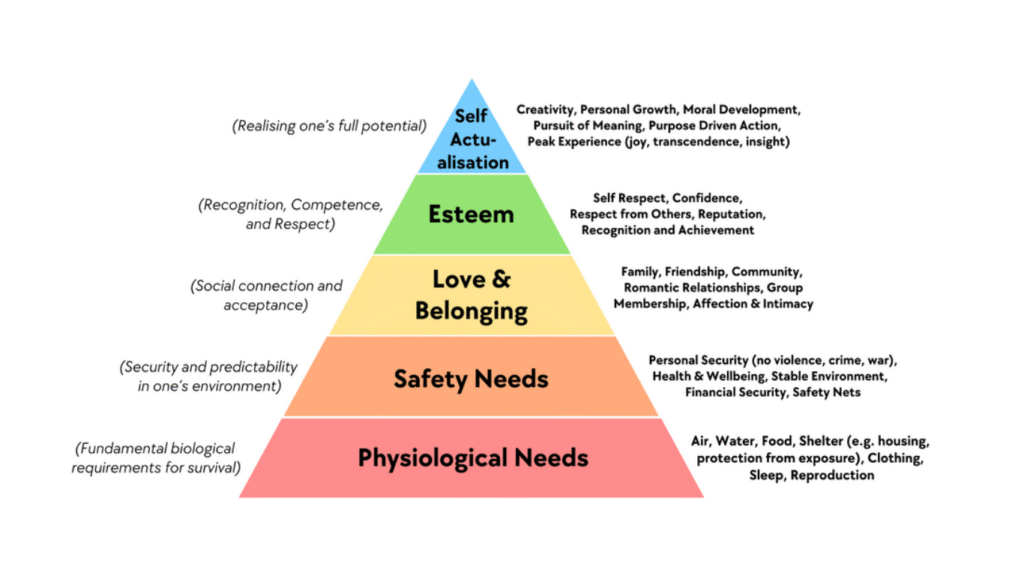Ever wondered why you feel so satisfied after a promotion, yet still crave meaningful connections at work? Or why, despite a great salary, something still feels…missing? You’re not alone. Human motivation is complex — but what if there was a simpler way to understand it? Enter ERG Theory.
If you’re here searching for the ERG Theory full form, its meaning, and how it applies in real life — whether you’re a student, manager, HR professional, or just curious — this guide breaks it all down in plain English.
What Is the Full Form of ERG Theory?
ERG stands for:
Existence
Relatedness
Growth
Developed by American psychologist Clayton Alderfer in 1969, ERG Theory is a refinement of Maslow’s famous Hierarchy of Needs. Instead of five tiers, Alderfer grouped human needs into three core categories — making the theory more flexible, relevant, and realistic.
ERG Theory Simplified: What Does Each Letter Mean?
Let’s break down the full form of ERG into bite-sized, relatable pieces.
1. Existence Needs (E)
These are the basic material and physiological needs that keep us alive and well.
Think:
- Food, water, shelter
- Safe working conditions
- Salary, job security
📌 Example: If you’re constantly worried about paying rent or losing your job, you won’t care much about self-improvement or team bonding.
2. Relatedness Needs (R)
This is about our desire to connect with others — to feel respected, valued, and emotionally supported.
Think:
- Family and friendships
- Supportive workplace relationships
- Recognition and appreciation
📌 Example: You could be earning six figures, but if you feel isolated at work or unappreciated by your boss, motivation can tank fast.
3. Growth Needs (G)
This involves personal and professional development — the urge to become better, stronger, and more capable.
Think:
- Career advancement
- Learning new skills
- Autonomy and achievement
📌 Example: A developer might love solving complex problems. Even with a good team and decent pay, they won’t feel fulfilled unless they’re growing.
ERG vs. Maslow: What’s the Difference?
While ERG Theory is based on Maslow’s model, here’s how they differ:
| Aspect | Maslow’s Hierarchy | ERG Theory |
| Levels | 5 | 3 |
| Order | Fixed sequence (must fulfill lower needs first) | Flexible (can pursue multiple needs at once) |
| Regression | Not emphasized | Regression allowed — if growth is blocked, people refocus on relatedness or existence |
👉 ERG Theory acknowledges that human motivation isn’t always linear. You can crave career growth while still seeking emotional support — or fall back to basic needs when stressed.
Why Is ERG Theory Important in the Workplace?
Whether you’re an employer trying to motivate your team or an employee reflecting on your own job satisfaction, ERG Theory offers a useful lens.
How Managers Can Use ERG Theory:
- Existence: Offer competitive pay, a safe environment, and clear job roles.
- Relatedness: Foster team collaboration, open communication, and recognition.
- Growth: Provide training, mentorship, and paths to promotion.
📌 Real-World Example:
A tech startup introduces free lunches (Existence), team-building Fridays (Relatedness), and skill workshops (Growth). Employees feel supported on all levels — and productivity soars.
How ERG Theory Shows Up in Daily Life
Let’s look at a few relatable scenarios:
You’re promoted and finally earn more. But now you miss lunch with your old teammates? That’s Relatedness kicking in.
You love your team, but feel stuck in your role? Your Growth needs are unmet.
You’re excited about learning, but a recent layoff makes you focus on job security again? You’ve regressed to Existence.
See how fluid human needs really are?
ERG Theory in Real Life: A Simple Analogy
Think of motivation like a three-layer smoothie:
- Bottom layer (Existence): the base — without it, the smoothie collapses.
- Middle layer (Relatedness): adds flavor — connects everything.
- Top layer (Growth): the fancy swirl — what makes it feel rewarding.
Sometimes, the smoothie blends unevenly. That’s life. ERG Theory helps us re-mix motivation based on what we’re really craving.
Key Takeaways
ERG = Existence, Relatedness, Growth.
It simplifies and improves upon Maslow’s Hierarchy.
People can focus on multiple needs at once, not just climb a strict ladder.
It’s useful for leaders, educators, and anyone who wants to understand human behavior better.
In tough times, we might regress to lower needs, and that’s completely normal.
FAQs: People Also Ask
Q: Who created ERG Theory?
Clayton Alderfer, in 1969, as a revision of Maslow’s Hierarchy of Needs.
Q: Why is ERG Theory important?
It provides a more realistic, flexible model of motivation — useful in work, education, and psychology.
Q: How can I use ERG Theory as a manager?
Ensure employees’ basic needs (E), nurture relationships (R), and provide development opportunities (G).
Q: Can needs overlap in ERG Theory?
Absolutely. Unlike Maslow’s model, ERG Theory accepts that multiple needs can drive motivation at once.
Final Thoughts: What’s Motivating You Right Now?
Whether you’re leading a team or leading your life, take a step back and ask: Am I meeting my existence, relatedness, and growth needs? Motivation isn’t one-size-fits-all — it’s a shifting balance. ERG Theory gives you the roadmap to realign when things feel off.
👉 Pro tip: Conduct a quick “ERG audit” every month. List one thing you’re doing for each need — and adjust if something’s lacking.
